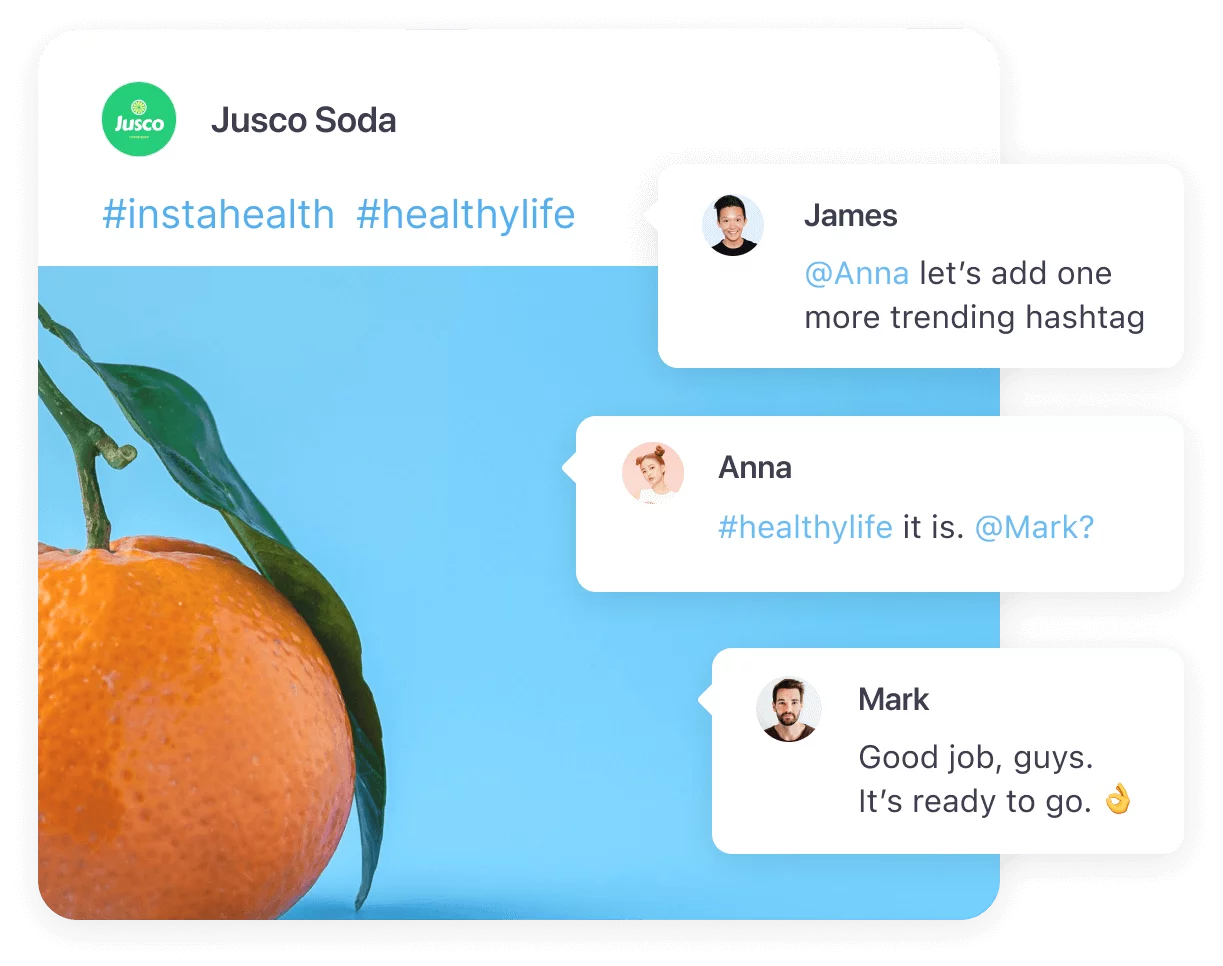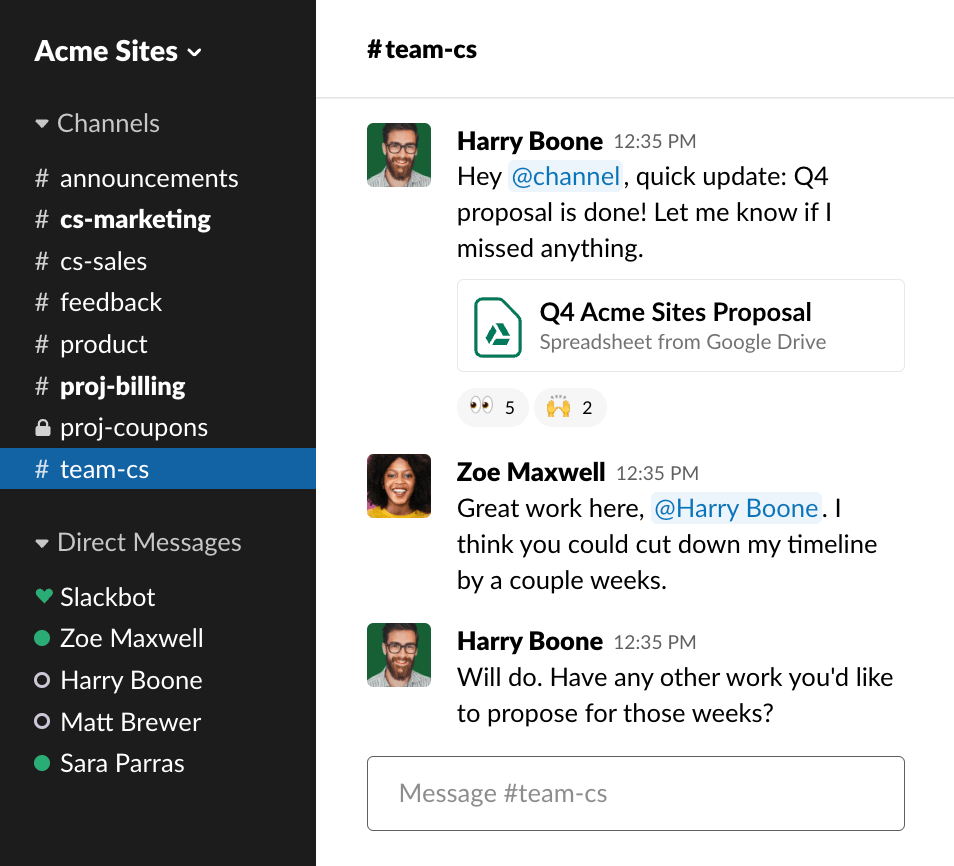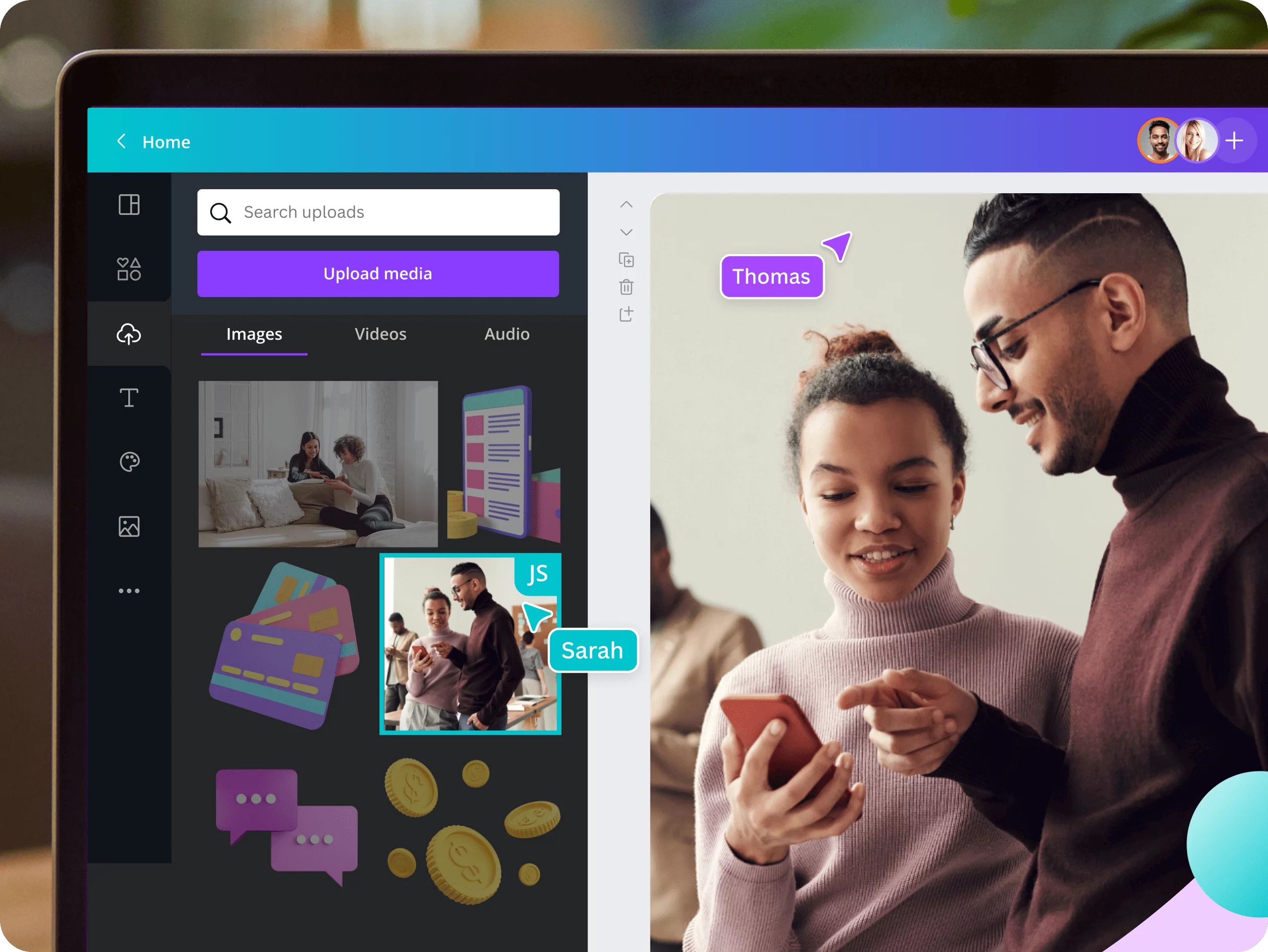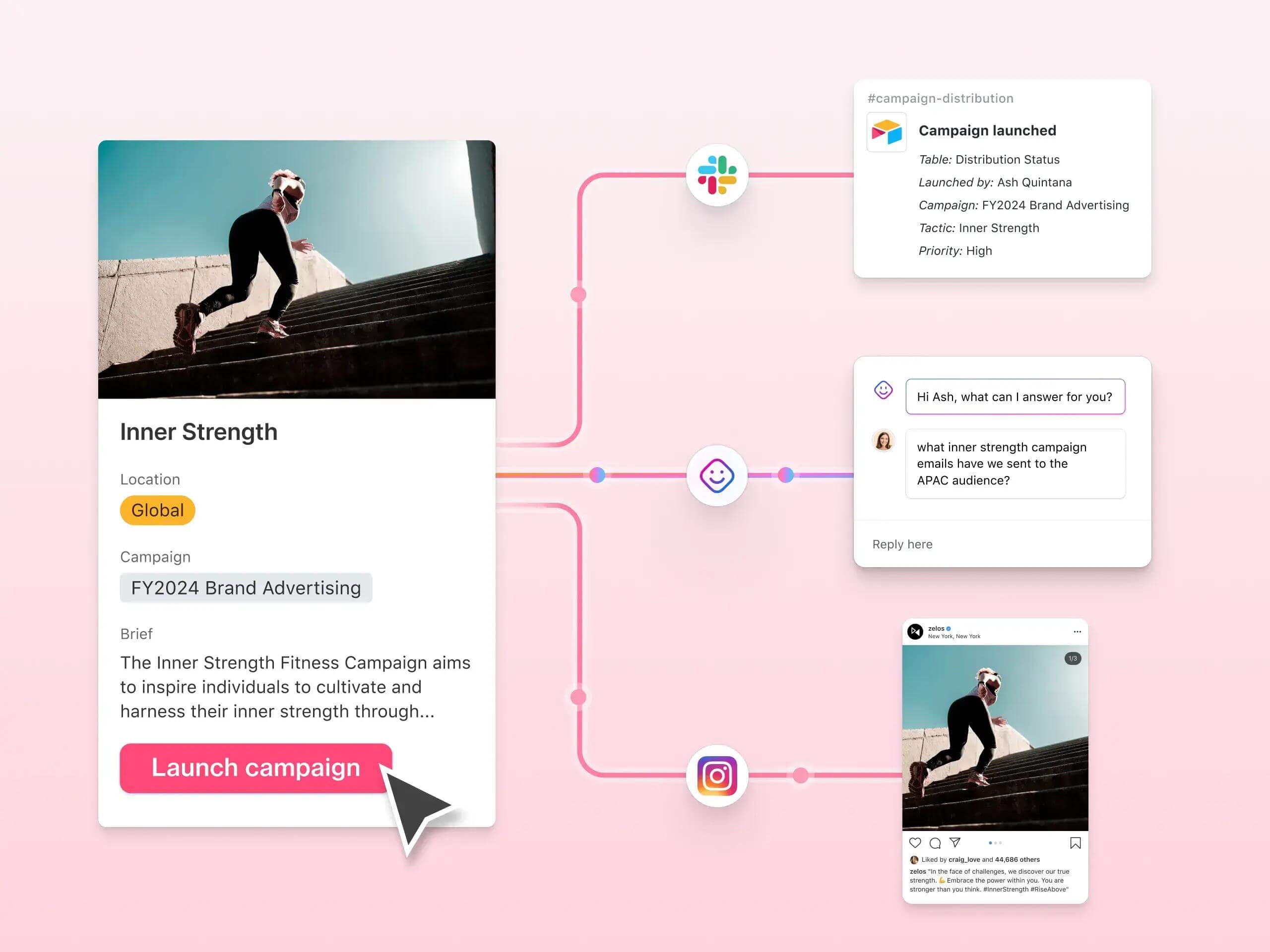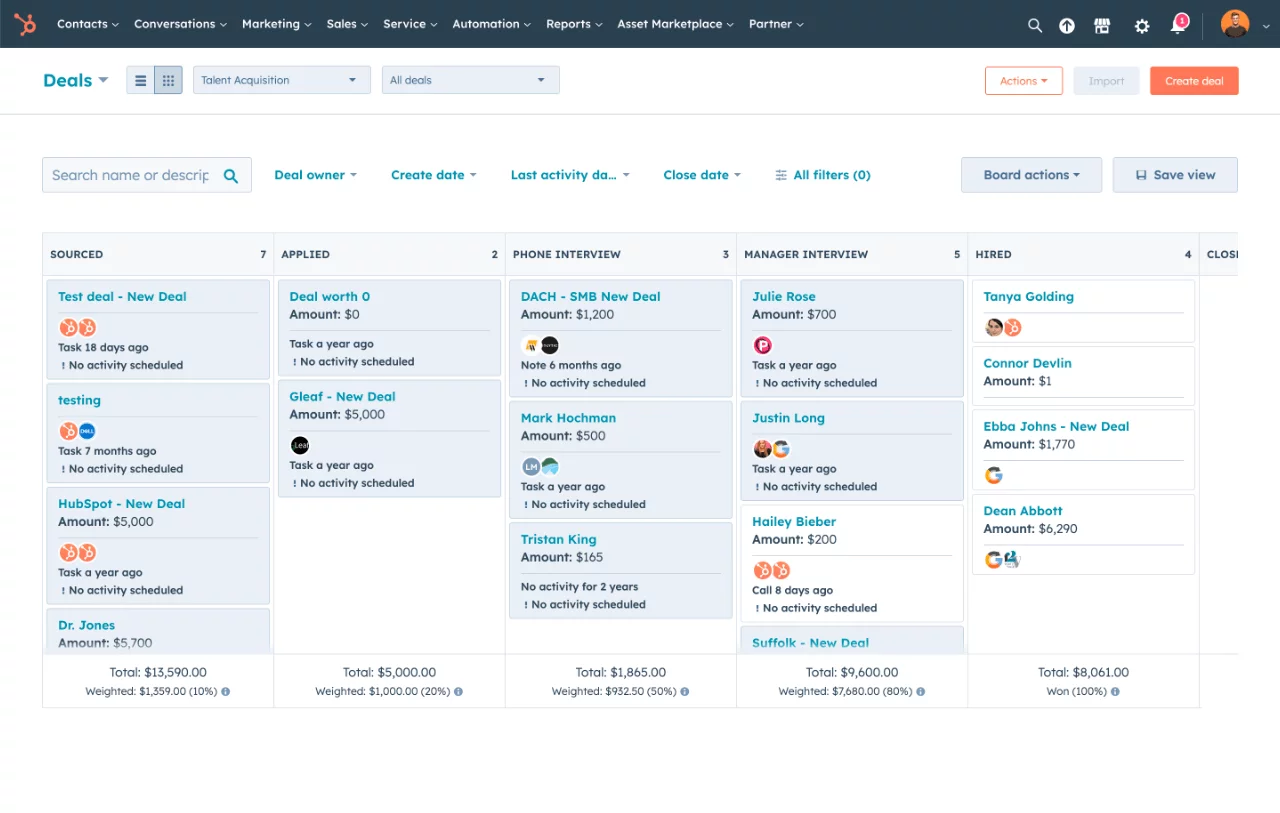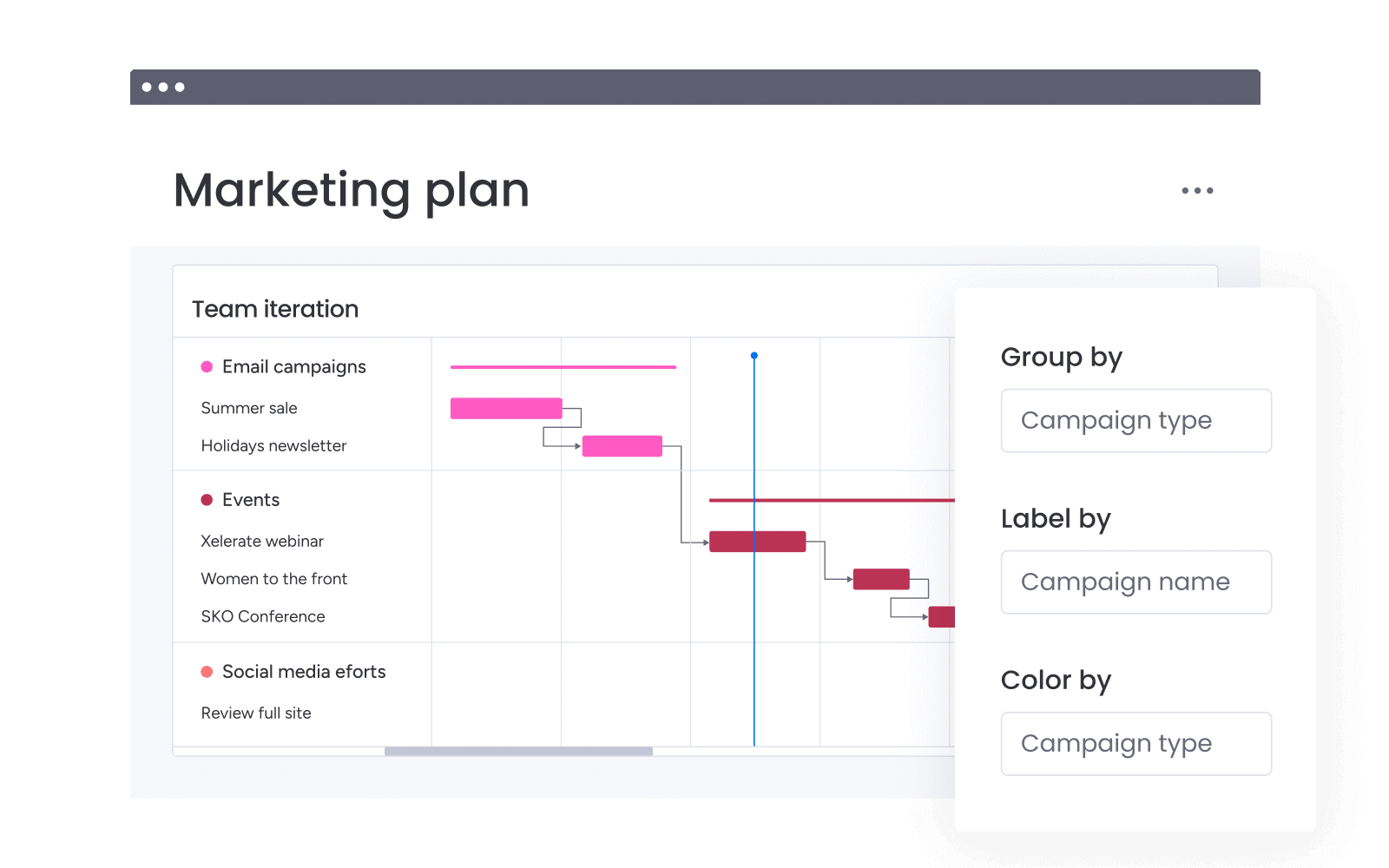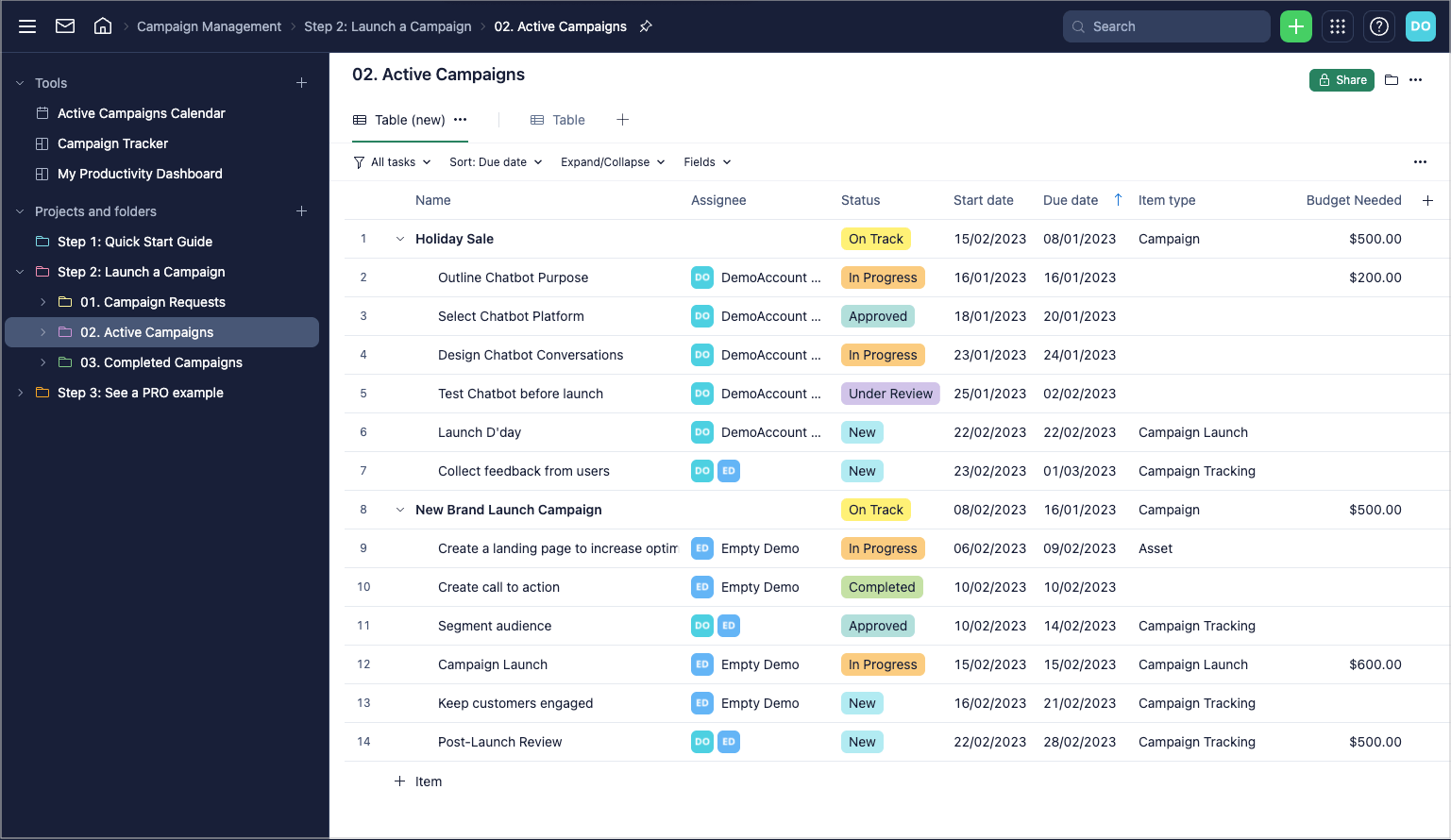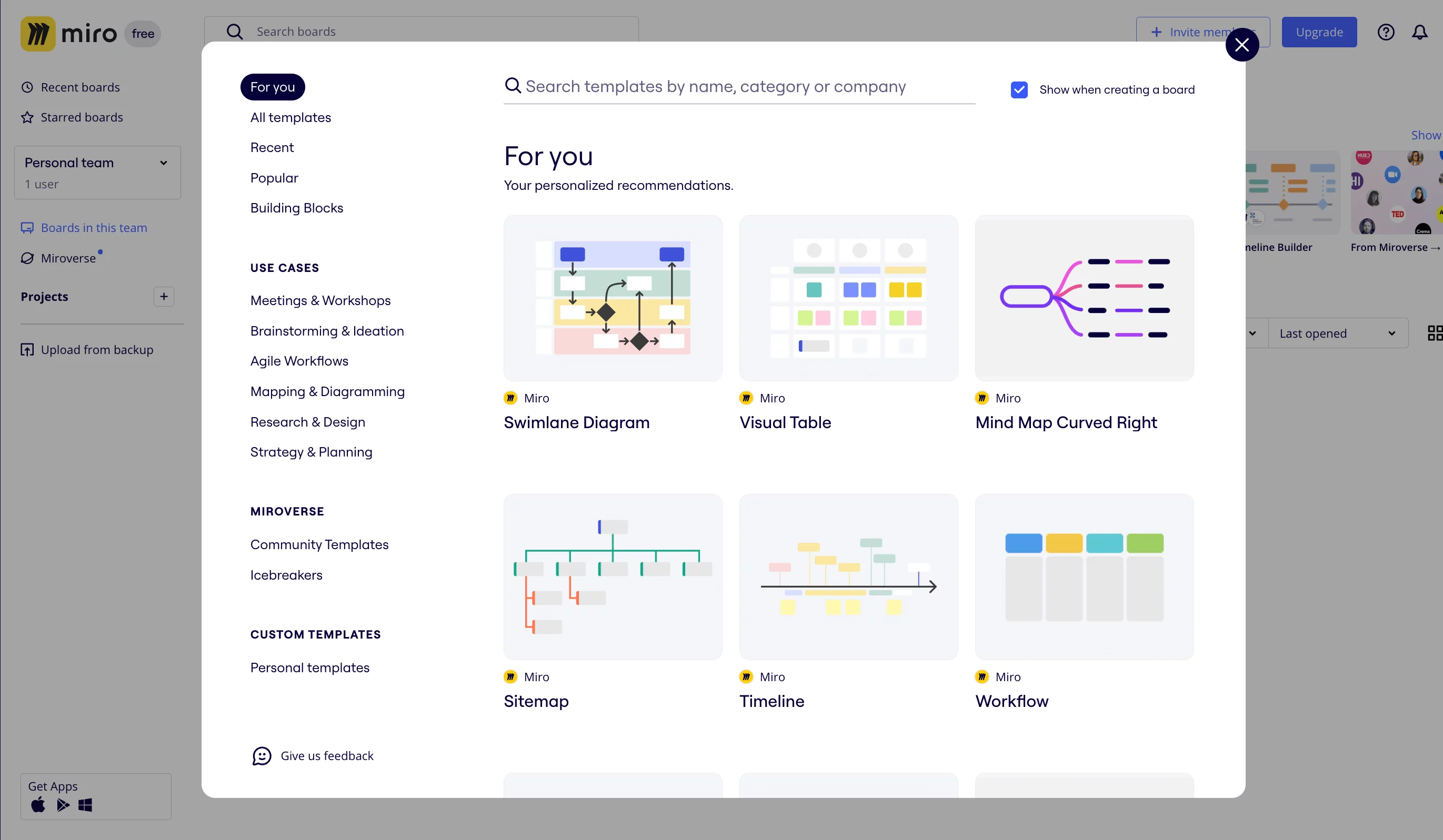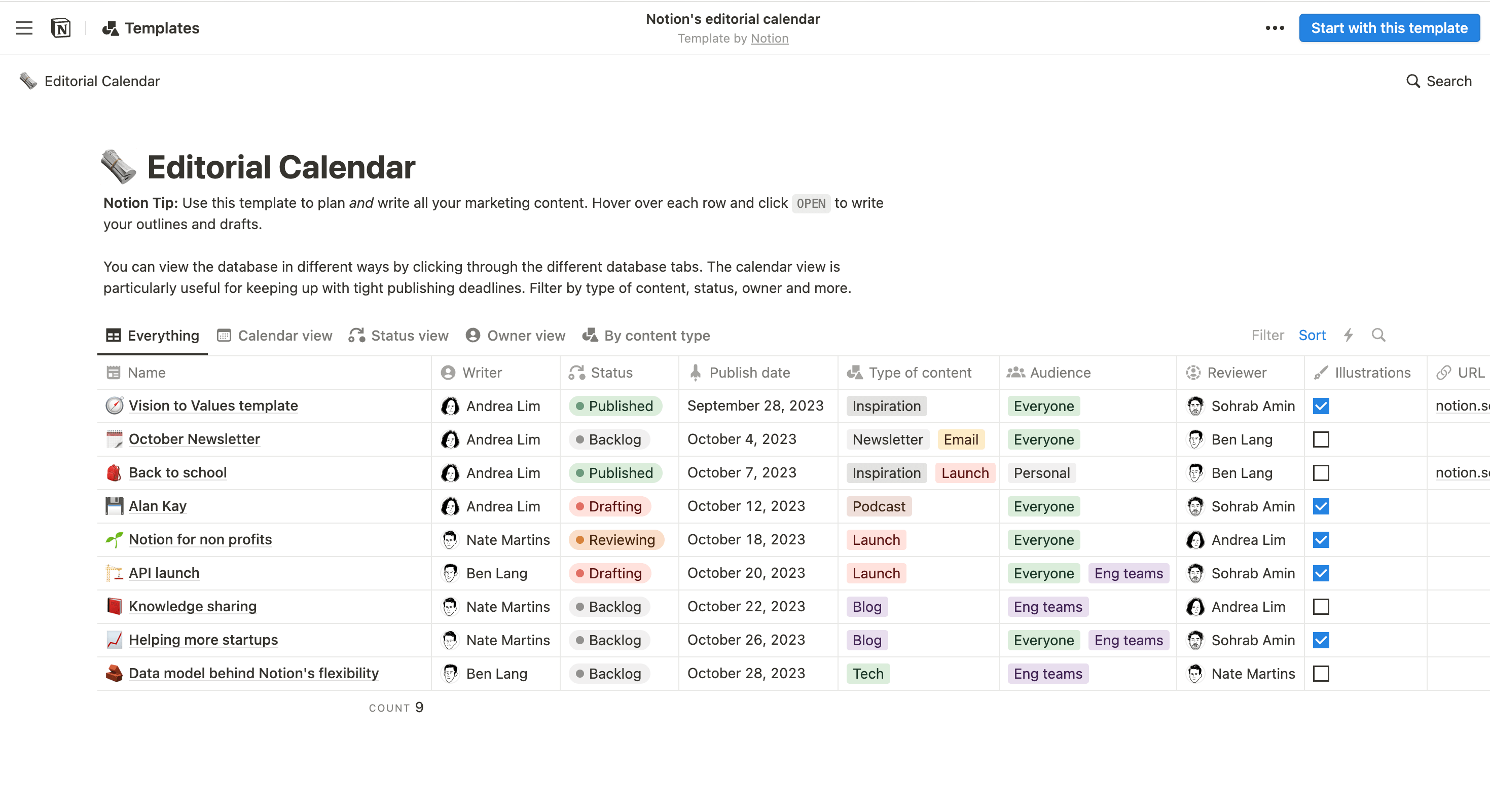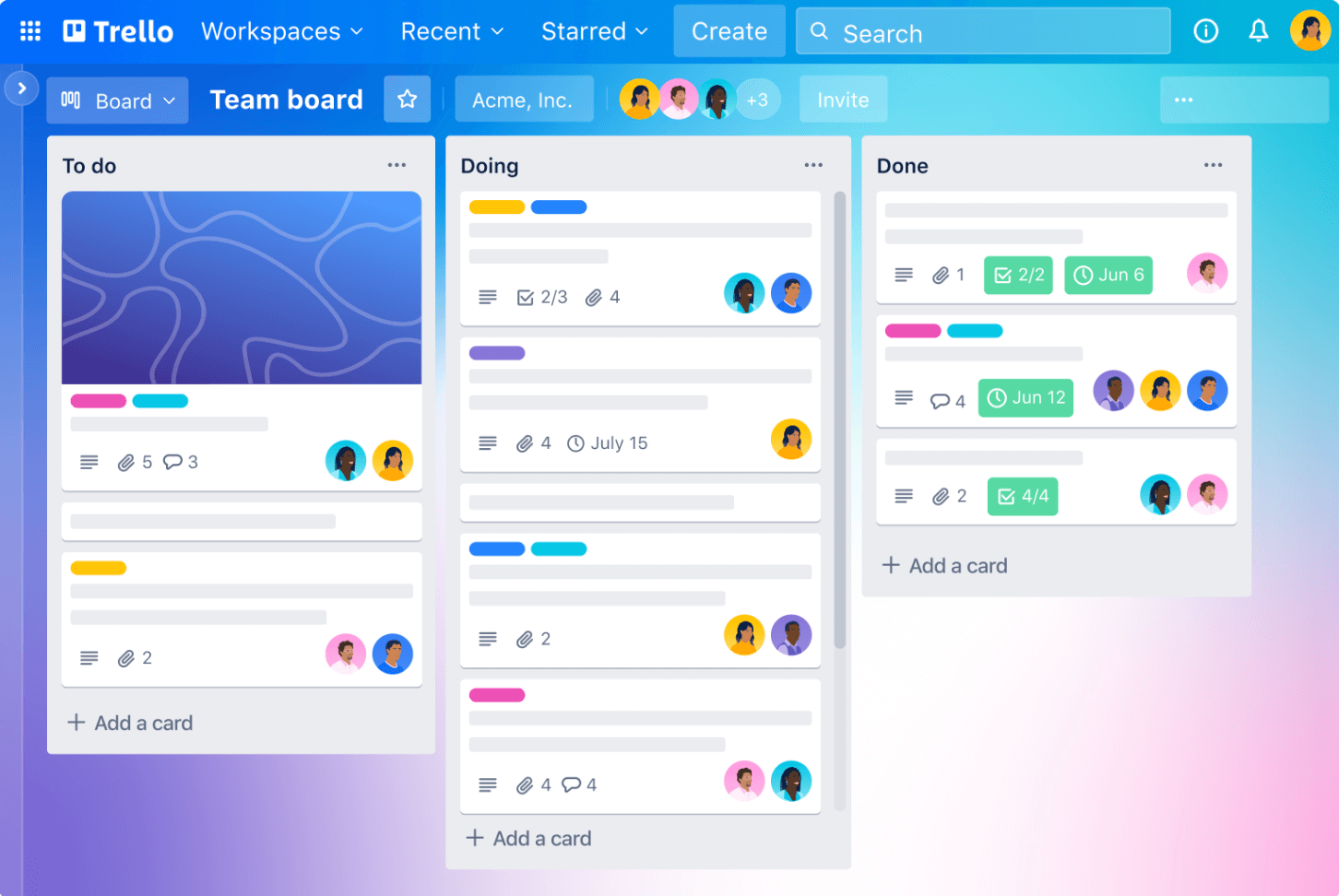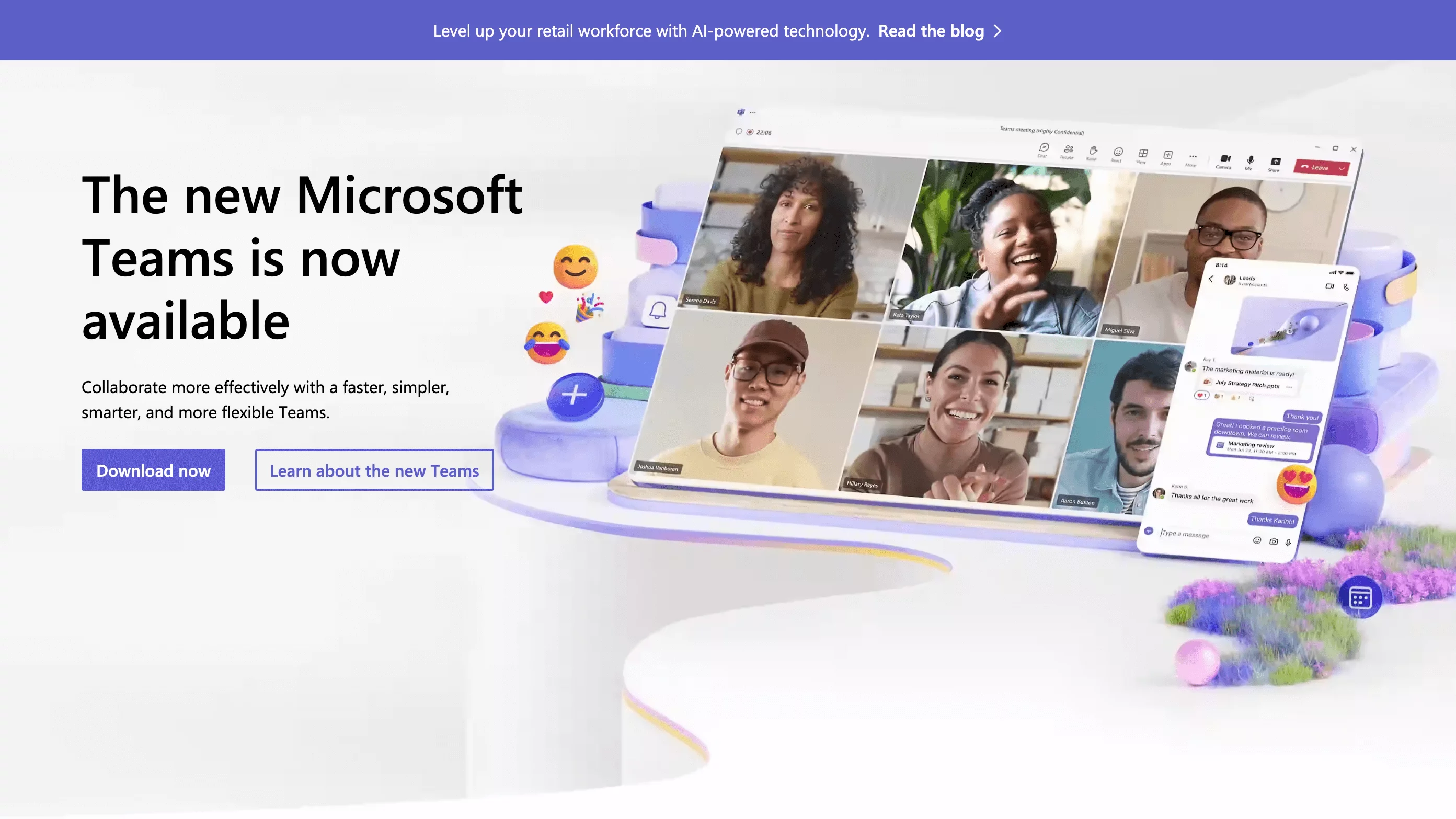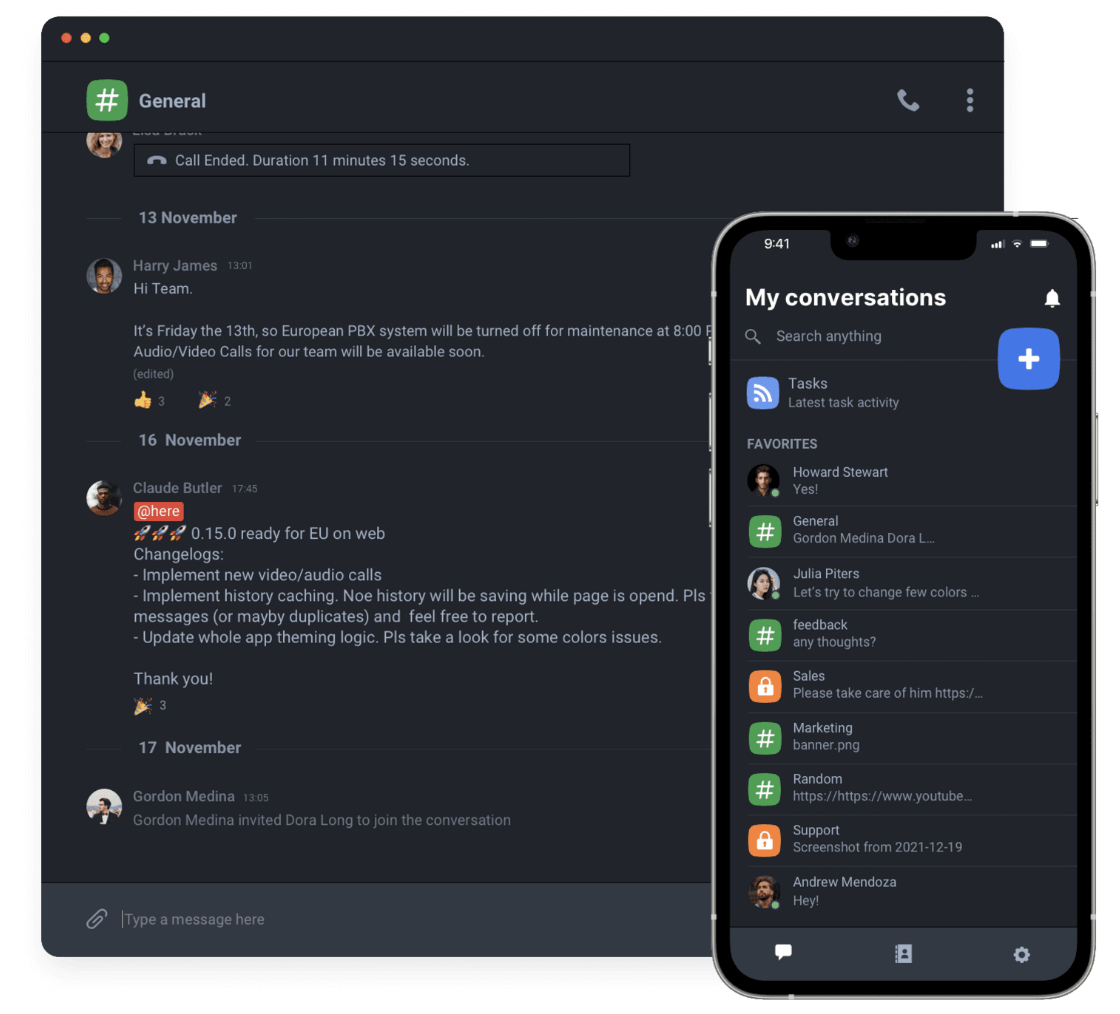Marketing collaboration software floats marketing boats in a very fast-paced and ever-changing environment. Especially when time is of the essence, there’s no place for miscommunication.
Marketing collaboration tools help teams build streamlined workflows, review and approve content fast, and benefit from collaborative creativity. They promote centralized communication to avoid losing information and improve project management. Stay on track, keep your colleagues close, and generally do great rather than re-do things — that’s a win-win.
In this article, I’ve gathered the 12 best marketing collaboration software options for all stages of the marketing process, from planning to retrospective analytics. Let’s go!
What is marketing collaboration software?
Marketing collaboration software refers to tools designed to simplify communication, project management, and workflow optimization within a marketing team. These platforms enable real-time collaboration on marketing campaigns, content creation, and strategy planning, boosting efficiency and productivity within teams.
What to look for in a marketing collaboration tool?
Marketing collaboration tools help teams work faster, better, and more aligned, making everyday collaboration easier. Streamlined processes are vital to achieving results, and that’s where collaboration tools save the day.
A good marketing collaboration tool:
- Simplifies real-time interactions and collaborations across the team with comments, feedback features, notifications, and more.
- Serves as a unified hub for all stages of content management, from planning to gathering analytics.
- Helps approve and proof content faster — bonus points for version history to enable the team to revisit previous solutions.
- Integrates with key social media channels for streamlined content scheduling and publishing.
- Has analytical features to monitor campaign effectiveness and power strategic decisions.
- Is user-friendly to ensure anyone can use it without an extensive learning curve — especially your clients who might be less tech-savvy than your teammates.
Does your tool have to have all those features? When choosing the collaboration tool for your team, focus on what issues you want it to solve first and foremost.
12 best marketing collaboration software for businesses
1. Planable – best social media collaboration software
You say “marketing collaboration,” I say “Planable”. Planable is a content management platform that is built on a collaborative spirit.
With Planable’s Universal Content feature, you can work on any marketing content, from social media posts to blogs, emails, and briefs. Team members can work on the same asset like they’re in the same room, with real-time comments, in-context annotations, and no lengthy email chain in sight.
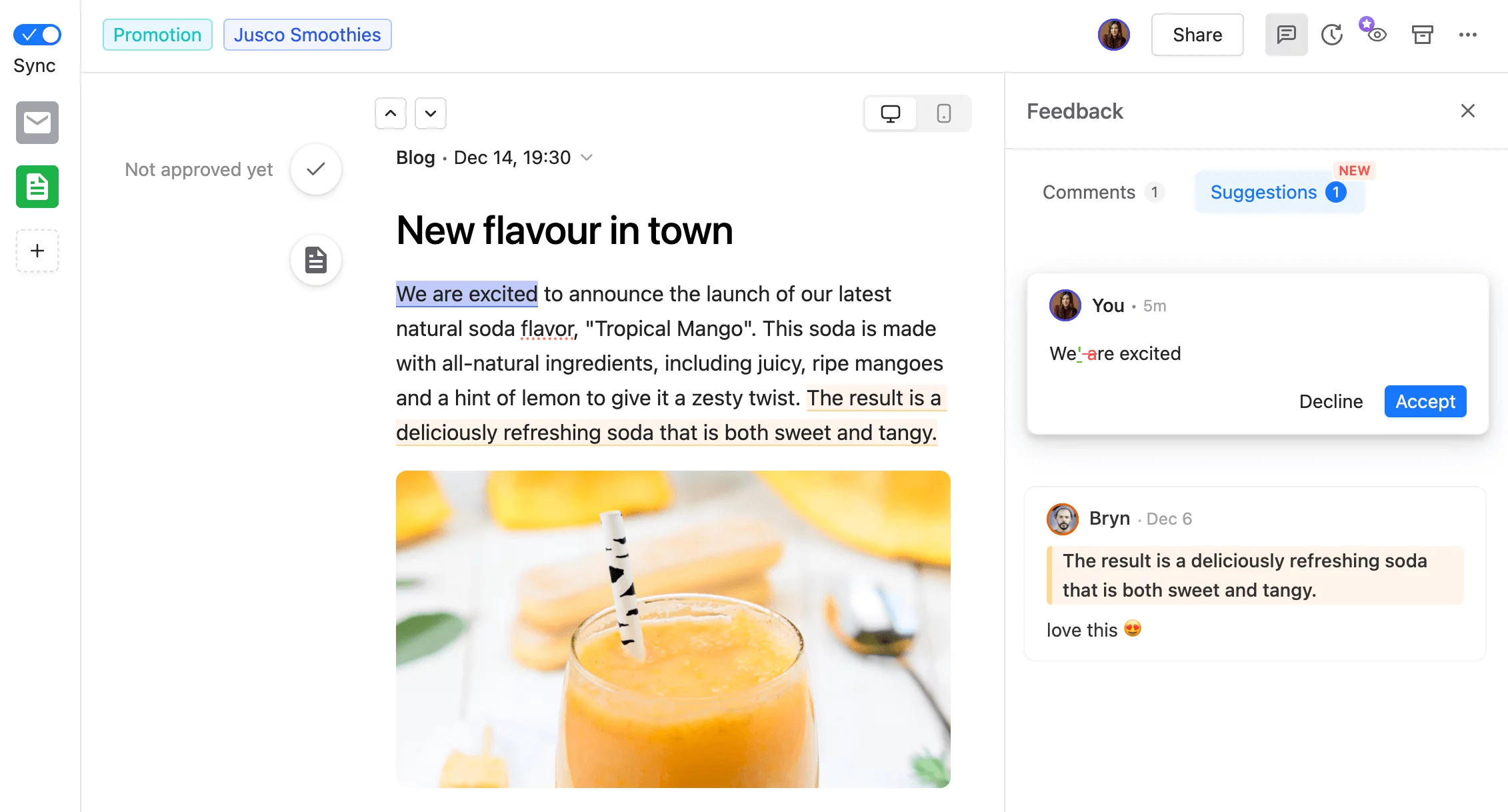
Article collaboration in Planable
As a social media management platform, Planable helps you create, approve, and schedule content for social platforms. Whether it’s videos, carousel posts, tweets, or stories, you can put it in your calendar, set the time, and relax — rest assured, Planable will put your content in front of your audience.
Key features
- Multiple workspaces with permission levels. If you manage several clients and want to keep things tidy, you can leverage separate workspaces and build a specific ecosystem within each, including custom roles and permissions, approval workflows, and connected accounts.
- Collaboration features. Create content with your colleagues and clients side-by-side. You can leave feedback in the comments next to your assets, utilize internal notes made for the teammates’ eyes only, and get content approved in two clicks with custom approval workflows.
- Automated posting to social media platforms. Planable automatically posts your scheduled and approved content to Instagram, Facebook, LinkedIn, Twitter, TikTok, YouTube, Pinterest, and Google My Business.
- Share post links with external collaborators. Easily share content via a link, even with guests outside of your workspace.
Drawbacks: Planable has no social listening functionality.
Pricing: Planable offers 50 free posts. After that, you can upgrade for as little as $11/month/user and calibrate the price to fit the number of required workspaces and collaborators.
2. Slack – best for in-team communication
Slack is a corporate messaging app that marketing teams use to organize and facilitate team communication. Its chat rooms, direct instant messaging, group channels, and built-in video calls are designed to simplify communications and help everyone stay on the same page.
Key features
- Organized real-time communication. You can organize Slack channels by team, project, client, or any other way relevant to your work.
- Vast integrations. To streamline workflows, Slack integrates with many other marketing tools and services, such as Google Drive, Trello, Miro, and Notion.
Drawbacks: Despite the variety of features, Slack is mostly just a messaging app.
Pricing: Slack has a free plan suitable for small marketing teams with one workspace. You can upgrade to one of the two paid plans starting at $8.25/month/user if you need more features.
3. Canva – best for crafting creative assets
Canva is here for small creative teams looking to produce high-quality visuals without the steep learning curve of Photoshop or Figma.
It’s an all-in-one design platform that simplifies visual content creation, from social media graphics to presentations. No assigned designer on board? Canva has your back on that.
Key features
- Simple and streamlined design process. Canva’s drag-and-drop interface and extensive library of templates make it easy for marketing managers to produce designs quickly, even if they have little to no experience in graphic design.
- Brand book and resource library. Canva offers tons of royalty-free images, icons, fonts, and templates. In addition to its media library, you can create your brand book with colors, fonts, and logos.
Drawbacks: Canva is less powerful than Photoshop, Illustrator, or other dedicated design software for high-end visuals.
Pricing: Canva has one free and two paid plans: Pro for individual creators and Team for marketing teams, starting at $11.99/month and $23.99/month, respectively.
4. Airtable – best for custom marketing collaboration solutions
Airtable helps marketing teams build customized marketing collaboration tools. In the right hands, it combines a spreadsheet’s simplicity and a database’s power.
It’s a viable option for those who need a platform as dynamic as their team workflows.
Key features:
- Customizable app-building. In Airtable, you create your own marketing collaboration platform. Tailor workspaces to fit your marketing projects, whether it’s gathering analytics or tracking marketing campaigns.
- Integrations and automation. You can connect almost any other popular marketing-related app to your Airtable solution. Be it Slack, Salesforce, or social media channels like LinkedIn or Instagram, plug them in and automate data exchange.
Drawbacks: Setting up your app takes more time and resources, so Airtable is not an out-of-the-box solution.
Pricing: Airtable offers a free plan. It’s scalable for growing teams, offering two paid plans starting at $24/month/user.
5. HubSpot – best for customer relationship management
HubSpot is a compilation of multiple marketing collaboration tools. But the one that stands out is its CRM and customer relationship solution. HubSpot offers tools for digital marketing aimed at managing campaigns, operating sales, and automating marketing processes.
Key features
- Marketing workflow automation. HubSpot’s marketing platform automates repetitive tasks within your marketing campaigns, pushing clients down the marketing funnel and allowing teams to focus on strategy and creativity.
- Comprehensive CRM and customer support. HubSpot provides robust CRM capabilities to track customer interactions and gather marketing data. A common dashboard eases team collaboration and lead processing.
Drawbacks: HubSpot is complex with its multiple solutions and somewhat confusing pricing. It might take you a moment to get things rolling.
Pricing: HubSpot’s CRM is free to use. The platform offers multiple hubs (Marketing, Sales, Operational, etc.), each with its own pricing. Its CRM Suite Starter for small teams and individuals starts at $30/month.
6. Monday – best for creative process management
Monday is a project management tool that helps teams track marketing tasks, manage campaigns, and collaborate on multiple projects. With multiple marketing calendar views, automated approval processes, and visual goal settings, teams can work collaboratively on any task.
Key features
- Task management. With customizable boards, you can organize tasks by priority, deadline, or whatever system works best for your team. Team members can clarify task status, assign responsibilities, and consult timelines.
- Workflow automation. Monday has over 200 ready-made automation options that help you manage projects faster and keep your marketing focus on the task at hand by delegating routine to the platform.
Drawbacks: Many of Monday’s capabilities, including Gantt charts, calendar views, automation, time tracking, and integrations, aren’t available on the entry-level plan.
Pricing: Monday has one free and four paid plans starting at $12/month.
7. Wrike – best for streamlining project workflows
Wrike is a dynamic project management software designed for marketing teams aiming to optimize their project workflows and collaboration efforts. The platform organizes tasks efficiently, enabling teams to stay on track and stick to deadlines.
Key features
- Advanced task management. Wrike offers a comprehensive oversight of projects with multiple views, real-time performance reviews, and a productivity dashboard, making tracking progress and keeping team members accountable easier.
- Approval and proofing. You can leave feedback on campaign assets and add external clients through a link to give the final green light.
Drawbacks: Wrike can be overwhelming for new users, and it might be overkill for many smaller teams.
Pricing: There’s a free version for basic project tracking. You can upgrade for $9.80/month/user, or choose a more extensive plan.
8. Miro – best for brainstorming and strategy planning
Miro is a collaborative platform that helps teams visualize their marketing planning processes, making it a perfect tool for brainstorming sessions, retros, and strategizing.
Its intuitive interface helps break down marketing strategies and present them in various ways, from mind maps and flowcharts to Kanban boards, swimlane diagrams, and more.
Key features:
- Visual collaboration. Miro enables teams to map ideas, workflows, and project timelines visually, making it an essential tool for any strategy session.
- Interactive workshops and async collaboration. Miro’s Talktrack feature allows users to create interactive video walkthroughs of their boards, enhancing async cooperation within the team.
Drawbacks: Roles and pricing in Miro are confusing. You can accidentally invite your team member as admin, owner, or collaborator and pay more at the end of the month.
Pricing: As I mentioned, it’s pretty confusing. You can use Miro for free (provided you pay extra attention to how you add collaborators) or choose one of the paid plans starting at $10/month/user.
9. Notion – best for organizing marketing efforts
Notion is an all-in-one workspace for marketing teams, blending notes, tasks, and databases to simplify planning and execution. Team members using this tool can customize their workflows, from content calendars to campaign tracking, and collaborate on building a successful marketing campaign together.
Key features
- Integrated workspace. Notion offers a seamless transition between planning documents, project tasks, and performance databases, ensuring your marketing team stays on the same page.
- Customizable templates. Teams can jump-start their planning with ready-made templates designed for campaign management, content calendars, and more.
Drawbacks: Content creation is not Notion’s strong side — it’s more of a planning and task-tracking tool.
Pricing: You can use Notion for free or upgrade to one of the paid plans starting at $10/month/user.
10. Trello – best for managing projects in small remote teams
Trello is a project management platform known for its intuitive Kanban boards. Trello helps teams visually organize their projects, track progress, and update statuses in real time, ensuring teammates stay in sync with ongoing tasks and deadlines.
Key features
- Visual task management. Trello’s Kanban boards provide a clear overview of project tasks, enabling teams to drag and drop tasks through different stages.
- Customizable workflows. With numerous power-ups and integrations, Trello allows teams to tailor their boards to fit specific project needs, enhancing the efficiency of their workflows.
Drawbacks: While Trello is great for task visualization and management, it lacks in-depth project planning with more complex dependencies.
Pricing: Trello’s free version is often enough for small marketing teams. However, you can upgrade for $6/month/user if you are looking for more functionality and automation features.
11. Microsoft Teams – best for enterprises with Microsoft 365
Microsoft Teams is a platform for hosting video meetings tailored for big teams. It integrates seamlessly with Microsoft 365, so if your team uses the Microsoft Office pack, Teams contributes to your cohesive ecosystem for efficient collaboration.
Key features
- Unified communication. Teams centralizes chat, video calls, and meetings in one platform, so your team can keep all their conversations in the same place.
- Integration with Microsoft 365. This integration allows you to easily share and edit documents directly within Teams, boosting productivity and collaboration.
Drawbacks: Microsoft Teams is not a cool hipster solution, so no fun features are included.
Pricing: Microsoft Teams comes with a Microsoft 365 subscription. If you want to buy Microsoft Teams separately, you can choose from three paid plans starting at $4 per user/month.
12. Chanty – affordable for business marketing teams
Chanty is an all-in-one team collaboration platform for marketing teams to communicate, manage tasks, and share files. It offers unlimited messages, audio and video calls with screen sharing and built-in task management. Chanty’s Teambook is a single hub to organize tasks, conversations, pinned messages, and all the other content you share. Third-party integrations are available with Zapier, Google Drive, Trello, Asana, Github, Gitlab, and others.
Key features
- Unlimited messaging history
- Built-in Task Manager with Kanban board
- Chanty’s Teambook is a single hub for tasks, conversations, pinned messages and files
- Use voice messages as instant replies on the go
- With pinned messages you can always easily get back to the selected messages
Drawbacks: Invitation to join a call by the link is not available yet.
Pricing: Chanty has a free plan for up to 5 users; and a Business plan that costs $3 per user per month paid annually.
Wrap-up: Maximizing the potential of marketing collaboration software
Marketing collaboration software helps you leverage the creativity of all your colleagues, even when you work remotely. When choosing your perfect tool, focus on the core application you have in mind, whether it’s content creation, task management, or communication.
Planable was built with collaboration in mind and helps marketing teams worldwide embrace their team power and create exceptional marketing. Try Planable today — 50 free posts await!




